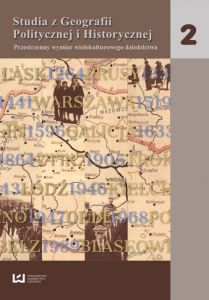Polsko-niemieckie pogranicze kulturowe na przykładzie kontaktów szlachty wielkopolskiej, śląskiej i brandenburskiej w XVI–XVIII wieku
The Polish-German cultural borderland as illustrated by Great Poland (Wielkopolska), Silesian and Branderburg nobility in 16th to 18th centuries
Author(s): Paweł KlintSubject(s): Essay|Book Review |Scientific Life
Published by: Wydawnictwo Uniwersytetu Łódzkiego
Keywords: Rzeczpospolita Obojga Narodów; Wielkopolska; szlachta; pogranicze; Polish-Lithuanian Commonwealth; Great Poland; nobility; borderland
Summary/Abstract: W artykule przedstawiono tradycję wymiany kulturowej na pograniczu polsko-śląsko-brandenburskim w XVI–XVIII w. na przykładzie relacji szlachty zamieszkującej w każdym z tych regionów. Zaprezentowano kontakty rodzinne i majątkowe szlachty polsko- i niemieckojęzycznej, ze specjalnym naciskiem na polonizację rodzin szlacheckich, które przybywały do Wielkopolski z południa lub zachodu i osiedlały się tam na stałe. Analiza kwestii etnicznych na pograniczu służy głównie rozpatrywaniu tworzenia się specyficznej wspólnoty szlacheckiej na kresach Wielkopolski i polsko-niemieckiej wymiany kulturowej. The article presents the tradition of cultural exchange in the Polish-Silesian-Brandenburgian borderland in the 16th to 18th century on the example of the relationship of the nobility living in each of these regions. During the three centuries before the partitions, there was a process merging the Polish- and German-speaking nobility in the borderlands. Family ties and financial relations strengthened the bonds between the gentry from different countries. In addition, in the 16th and first half of the 17th century noble families from Silesia or Branderburg were settling within Poland. Some of these families were polonised, while others remained part of the German language and culture. Reformation was another element bonding the nobility from these regions – many Polish noble families from the Greater Poland borderland adopted reformed faith and came in close relations with the Protestants of Silesia and Brandenburg. With such tight relationships, there was a need for knowledge of the German language among Polish nobility, as well as the need to learn Polish among Silesians and Branderburgians. But the knowledge of language was not the only element shaping the borderland culture – the elements of Polish and German culture were also merging. All this led to the emergence of a community in the noble society (at least in the western Great Poland (Wielkopolska). Borderland became the place with much stronger neighbourhood, family and material ties, as well as much greater shared interests and local identity than in other regions.
Journal: Studia z Geografii Politycznej i Historycznej
- Issue Year: 2013
- Issue No: 02
- Page Range: 165-180
- Page Count: 16
- Language: Polish

